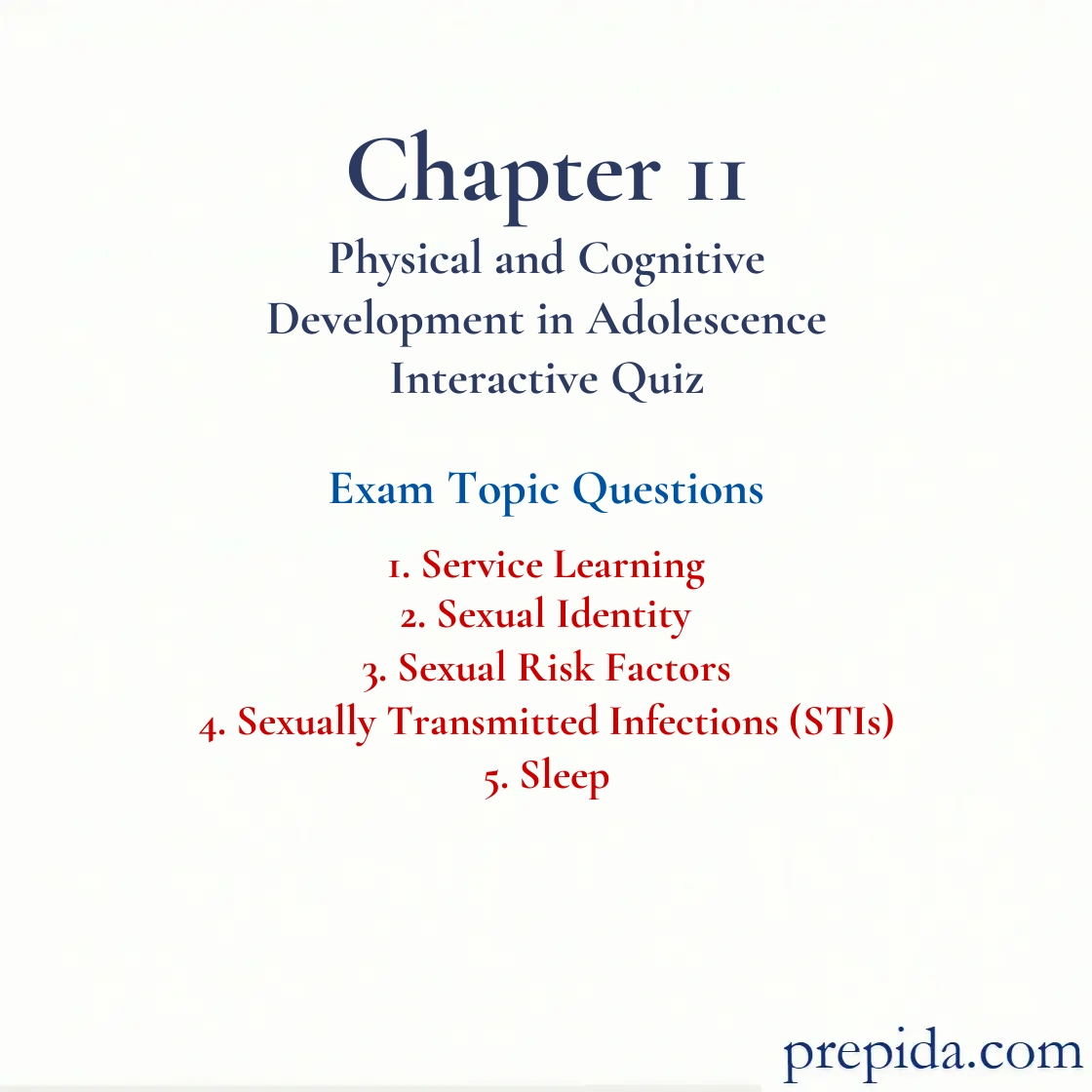
Identify a true statement about service learning.
- It becomes ineffective when students are given some degree of choice in the service activities in which they participate.
- It aims at making adolescents more self-centered.
- It is effective when it provides students opportunities to reflect about their participation.
- It limits the amount of time students spend volunteering.
Service Learning: A form of education that promotes social responsibility and service to the community.
________ learning is a form of education that promotes social responsibility and service to the community.
- Service
- Social
- Collaborative
- Cooperative
Social Policy: A national government’s course of action designed to promote the welfare of its citizens.
In the context of adolescent sexuality, identify a true statement about developing a sexual identity.
- All gays and lesbians quietly struggle with same-sex attractions in childhood.
- An adolescent's sexual identity involves styles of behavior and an indication of sexual orientation.
- The majority of sexual minority adolescents have incompetent and unsuccessful paths of development through adolescence.
- Adolescents with opposite-sex attractions never experience any degree of same-sex attractions.
Gender Identity: The sense of being male or female, which most children acquire by the time they are 3 years old.
Juanita, a Latino girl, is entering adolescence, and her mother wants to keep her from risky sexual behavior. According to research, her mother should
- engage in a lower level of parental monitoring.
- avoid emphasizing the need for academic excellence.
- foster a close and supportive relationship with Juanita.
- keep Juanita away from adolescent males until she reaches an appropriate age.
Attachment: A close emotional bond between two people.
According to a study conducted by Glei (1999), in a single act of unprotected sex with an infected partner, a teenage girl is least likely to contract
- human immunodeficiency virus (HIV).
- genital herpes.
- genital warts.
- human papillomavirus (HPV).
According to a study conducted by Glei (1999), in a single act of unprotected sex with an infected partner, a teenage girl has the greatest chance of acquiring
- genital warts.
- genital herpes.
- gonorrhea.
- chlamydia.
Sexually Transmitted Infections (STIs): Infections that are contracted primarily through sexual contact, including oral-genital and anal-genital contact.
In a single act of unprotected sex with an infected partner, a teenage girl has a ________ percent risk of getting HIV.
- 1
- 10
- 25
- 50
Sensorimotor Stage: The first of Piaget’s stages, which lasts from birth to about 2 years of age; infants construct an understanding of the world by coordinating sensory experiences with motoric actions.
Sexually transmitted infections (STIs)
- are rarely transmitted through oral sex.
- can be prevented by contraceptive pills or implants.
- rarely occur in U.S. adolescents.
- are contracted primarily through sexual contact.
Sexually Transmitted Infections (STIs): Infections that are contracted primarily through sexual contact, including oral-genital and anal-genital contact.
Several research studies were conducted by Mary Carskadon and her colleagues on the sleep patterns of U.S. adolescents. They concluded from the studies that
- when given the opportunity, adolescents will sleep an average of 7 hours a night.
- older adolescents tend to be sleepier during the day than younger adolescents.
- early school starting times are conducive to the sleep patterns of older adolescents but not to those of younger adolescents.
- adolescents being sleepy during the day was a result of academic work and social pressures.
Mary Carskadon and her colleagues' research on adolescent sleep patterns found that
- when given the opportunity, adolescents will sleep an average of 9 hours and 25 minutes a night.
- adolescents' biological clocks undergo a shift as they get older so that older adolescents start to feel sleepy an hour earlier than younger adolescents.
- younger adolescents tend to be sleepier during the day than older adolescents.
- increased sleepiness in adolescents during the day was primarily due to academic work or social pressures.
Adolescent Egocentrism: The heightened self-consciousness of adolescents.